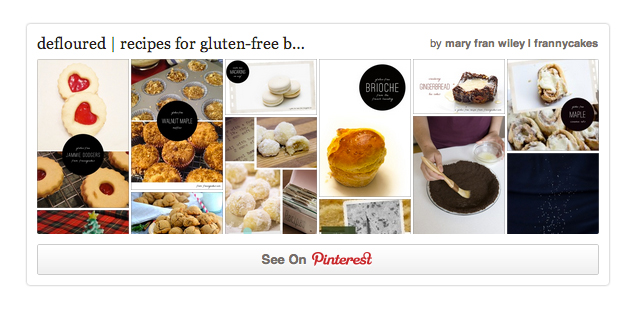 While answering questions on Facebook last week, I realized that many people who are baking gluten-free don’t actually know that much about baking.
While answering questions on Facebook last week, I realized that many people who are baking gluten-free don’t actually know that much about baking.
A person was upset over all of her baked goods being quite dense and crumbly. I know that my first batch of brownies after going gluten-free was actually quite atrocious. There are a million things that could be wrong, from the recipe itself, to the flours chosen to the technique used.
Gluten-free baking requires patience, practice and technique. But this isn’t much different from regular baking.
Except that you probably have more practice with how batters should look when they are made with regular flour rather than gluten free flour.
This series is going to cover everything from mixing methods, to baking tools and other skills for your arsenal.
Today, the most common mixing method. Creaming.
Most baking recipes (well, those not for fancy pastries), start out by telling you to cream the butter and sugar.
First, the science.
(oi, all my high school science teachers are having heart attacks at the thought of me talking about science).
What you are doing when you beat the butter and sugar together is creating little pockets of air where the sugar cuts through the fat. The lighter this mixture is when you are done, the lighter and more delicate your crumb will be. Because you added lots of air.
You then create an emulsion with the sugar mixture and the eggs. You need to add them one at a time. For the same reason you stream your oil into your vinaigrette while whisking, you need to combine 2 things (oil and water) that do not like to play nice.
You also need to alternate adding liquid and dry ingredients. Why? If you add all the liquid ingredients at once, your flour will lump and clump when you add it and it will cause you to over mix your batter trying to get it smooth. And an over mixed batter is dense and not so good.
How to make it work.
You need your ingredients at a cool room temperature – meaning you should take the eggs & butter out a few hours before baking. Your butter should be the texture of soft ice cream. It should not be so soft that when you touch it, it squashes completely.
A stand mixer works best for this method. (I use Old Faithful, a 30+ year old Kitchenaid stand mixer).
You first whisk together all of your flours, chemical leaveners (baking powder or baking soda) and salt. You want the leavener to be evenly distributed for an even rise.
In the bowl of your stand mixer, place your sugar and your butter. Start slowly so you don’t send sugar flying, and bump up the speed to medium. (High will create too much friction and melt your butter)
Beat until the sugar mixture turns light and fluffy. It will expand slightly in vloume. Next, you beat in the eggs one at a time. I have read that putting them in a bowl of warm water first helps them beat up better, but if you have left them out for an hour or two, you should be good.
Once the eggs are combined (and the bowl has been scraped down), you alternate adding the flour and any liquid ingredients.
See, it just takes a little bit of time (about 15 minutes max).
Next time your recipe calls for creaming, take your time and remember that a little patience goes a long way.


